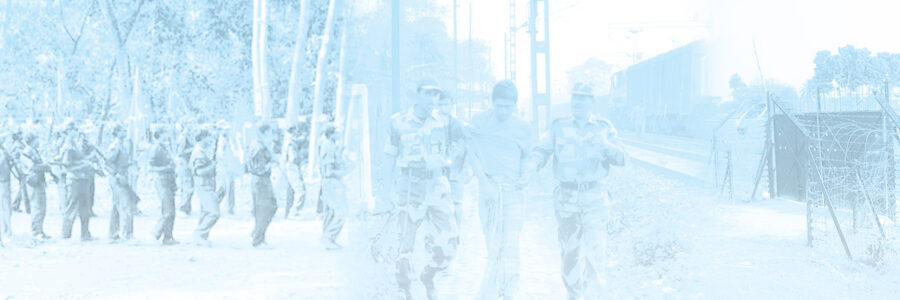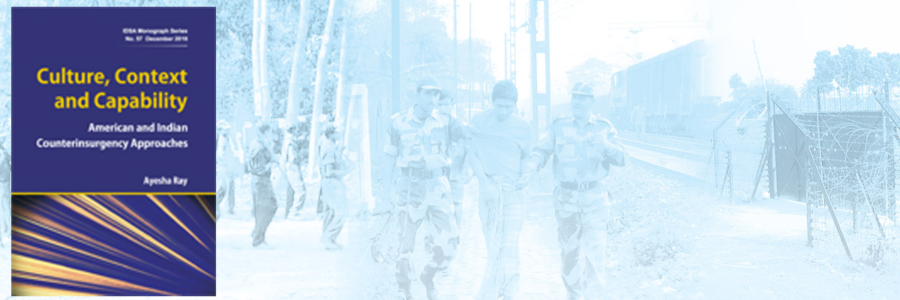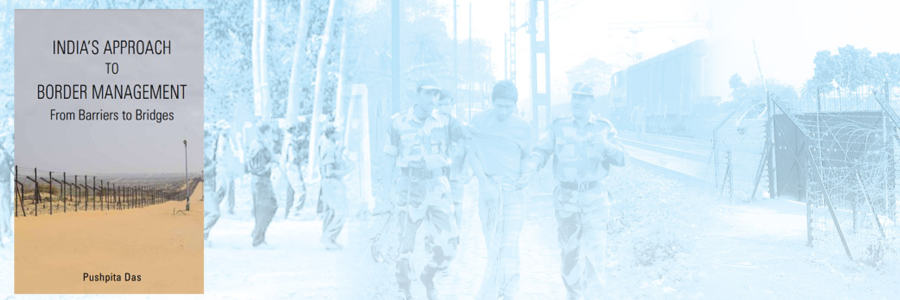India’s Approach to Border Management: From Barriers to Bridges
- Publisher: KW Publishers
2021
This book attempts to provide a comprehensive understanding of the circumstances which have shaped India’s approach towards its international borders and the framework it has developed to better manage its borders. The book argues that persistence of various cross-border threats and challenges and an absence of robust intra-regional trade among its neighbouring countries forced India to employ a security-centric and unilateral approach to border management with emphasis on hardening the borders to cross-border trade and travel and keeping the border areas underdeveloped to act as a buffer against external conventional threats. However, as India’s economy grew and the country gained more confidence and resources, India started perceiving the borders as bridges rather than barriers. Consequently, greater emphasis was being laid on development of border areas and restoring severed lines of communication with its neighbours through increased investments in building transportation networks both within the border as well as beyond. It also started constructively engaging its neighbours to effectively manage its international borders. Besides discussing the threats and challenges that India faces along the borders, the book aims to develop an understanding of India’s border management practices by analysing various programmes and initiatives such as the raising of border guarding forces; building of physical and electronic fences; the establishment of modern facilities for smoothening legitimate cross-border travel; the development of the border areas through special programmes; and increasing trade and connectivity as well as other cooperative bilateral mechanisms.
- ISBN: 9789391490003 ,
- Price: ₹. 1088/-
- E-copy available
Combating Terrorism: Evolving Asian Perspectives
- Publisher: Pentagon Press
2019
This anthology of essays traverses a wide range of issues exploring the inconsistencies in the global war on terror, and brings together diverse perspectives from eminent academia, practitioners, technologists and civil society from Asia. It takes the conversation beyond the academic realm by delving into first person accounts from authors who are living and fighting terrorism in the heart of conflict zones in the region.
- ISBN: 978-93-86618-81-8,
- Price: ₹.1245/-
- E-copy available
Coastal Security: The Indian Experience
This monograph aims at understanding India's approach towards coastal security as it has evolved since Independence. It describes the kinds of threats and challenges that India's coasts have been facing, or are likely to face in future. It critically analyses the various strategies and polices that the Indian government has devised over the years as a response to these threats and challenges.
Beyond Stereotypes: Contours of the Transition in Jammu and Kashmir
This study aims to highlight the contours of transition in Jammu and Kashmir. The study assays the issues and challenges that were highlighted during the three crises in the State since 2008. It analyses the immediate as well as long-term response of the government to these challenges.
Who Sets the Agenda? Does ‘Prime Time’ Really Pace Policy?
At a time when the country is seeing crises - political, social and moral, the role of the media is rising in perception as never before. But how much does 'prime time' in the era of 24 hour news coverage actually impact policy? This monograph unpacks the perceived influence of the media in specific foreign policy episodes and argues that while it has introduced accountability and real-time responses to issues, it still has not been able to establish long term policy impact.















